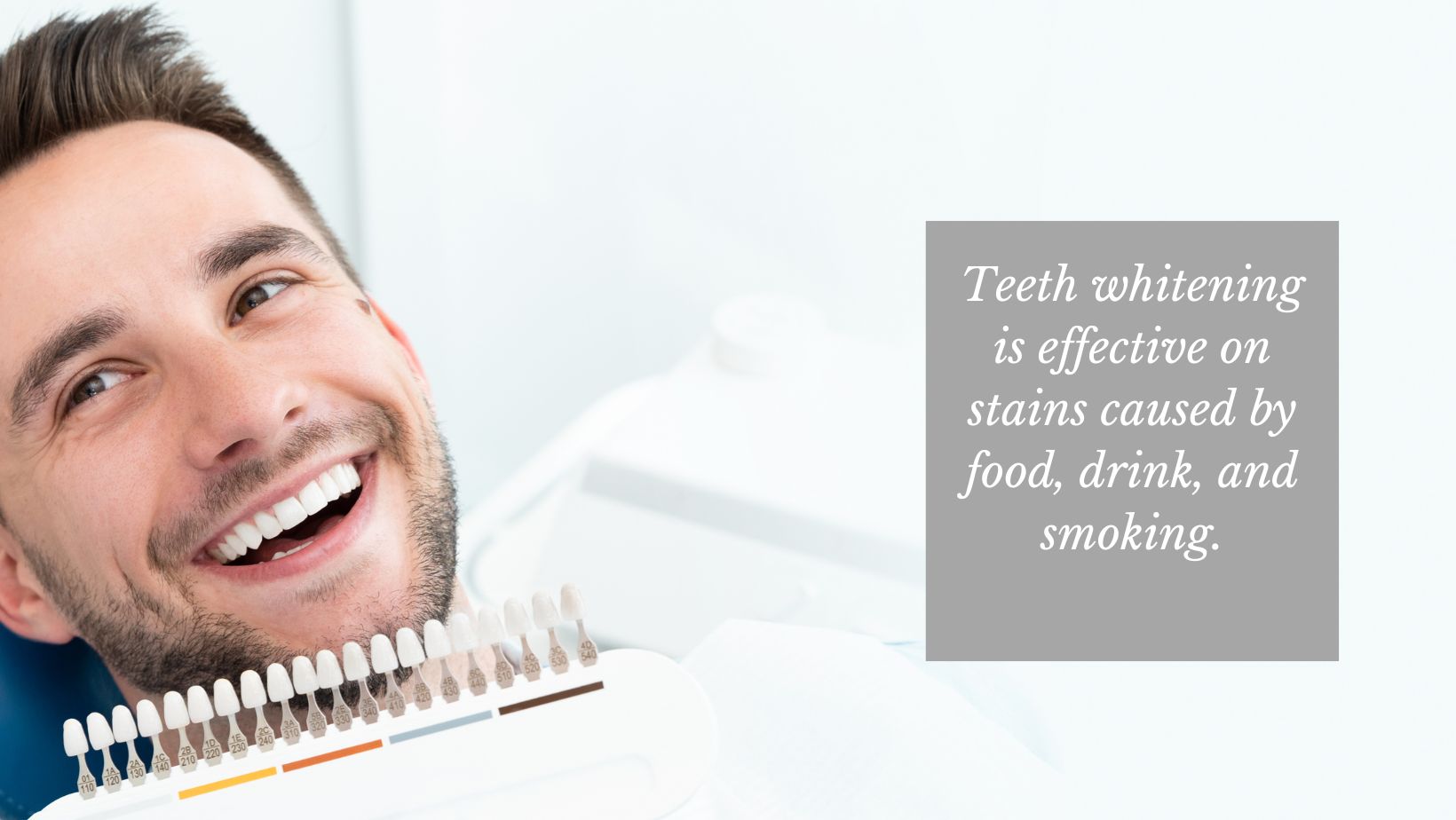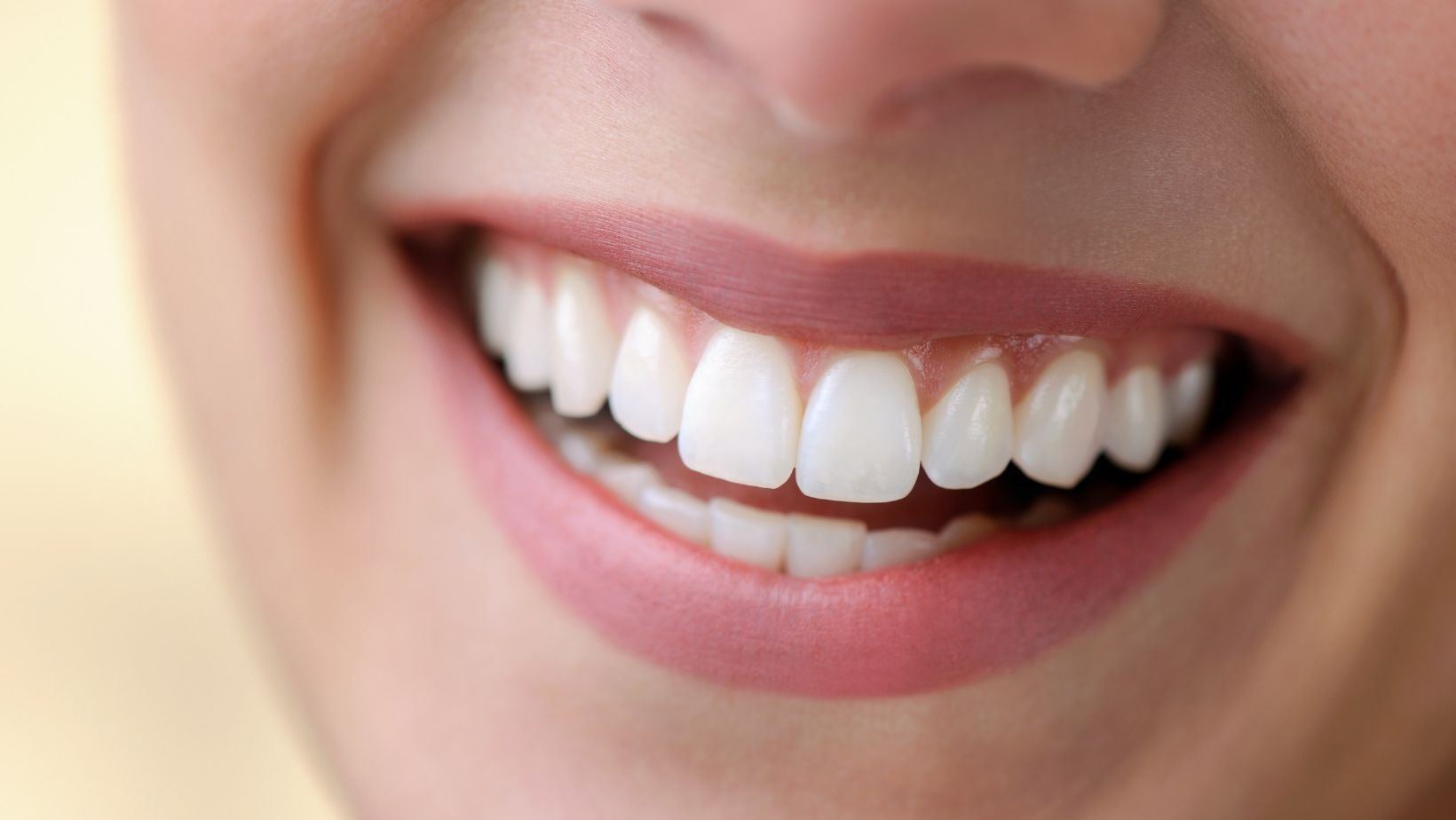This piece was originally published on 6/8/2020 and updated on 3/13/2022.
It has been said that the most important fashion accessory you can wear is a smile. One way many people choose to improve the look of their smile is through whitening their teeth at the dentist. Teeth whitening is one of the top reasons people see their dentist: 67% of American adults have tried teeth whitening, and it has become a multi-billion-dollar industry.
Why consult a dentist for whitening teeth? A dentist can help patients choose the fastest, safest, and most effective method to brighten their smiles.
Why Aren’t My Teeth White Anymore?
Over time, a person may notice their teeth becoming dull and changing color. Shades of yellow, brown, and gray are not uncommon. Several factors can contribute to the discoloration of teeth. The causes can be divided into intrinsic (internal) and extrinsic (external).
Intrinsic causes of tooth discoloration include heredity, aging, tooth decay, and overexposure to fluoride. Intrinsic stains will be especially challenging to get rid of with whitening agents.
Extrinsic causes come from external sources, some of which are avoidable and others that are not. Things like coffee, tea, wine, and tobacco will stain teeth. Certain diseases and medications, particularly antibiotics, can cause staining as well.
Teeth whitening is effective on stains caused by food, drink, and smoking. Teeth with yellow discoloration respond best to whitening agents. If a patient’s teeth are brown or grayish, whitening them may not work, medical issues and genetics could be a factor.
Two Options for Whitening Teeth: At Home Products or In-Office Visit
At Home Whitening
Teeth whitening products use a peroxide solution to bleach the teeth. Many local drugstores sell a variety of products at reasonable prices. Some are more effective than others. Patients can spend a lot of time and money searching for something that works.
In-Office Dental Whitening
Patients can also get teeth whitening from a dentist. The dentist can either administer the whitening agent in his or her office or will offer customized products to use at home. Teeth whitening with a dentist is typically more expensive than over-the-counter options, but having a professional supervise the process has its advantages.
- The dentist can whiten your teeth with a stronger solution that will last longer than at-home kits.
- In-office whitening is safer. Potent ingredients are used to brighten teeth and having dental professionals monitoring this process is best for the patient.
- Teeth whitening at the dentist yields results right away. While at home whitening takes several applications over time.
Dental practices will be able to provide information about the cost as well as success rates. Online patient reviews may also be a good source of information.
Choosing to Do Teeth Whitening Yourself
At-home teeth whitening is widely advertised and readily available. It takes the form of:
- Whitening toothpaste
- Whitening mouth rinses
- Gel strips (plastic strips that stick to your teeth)
- Whitening trays (molds that are filled with whitening gel and placed over the teeth)
When applied properly, toothpaste and mouthwash may help with some minor surface staining on the teeth. Gel strips and whitening trays tend to deliver better results than just basic brushing. Results vary widely though, and it may take numerous applications before there is any noticeable improvement.
These products are a popular option for many consumers. They are inexpensive and they don’t require a visit to the dentist. But an appointment with a professional can help zero in on the whitening method that will work best for a particular issue. That can save time and money, and get better results in the long run.

Whitening at Home vs. Whitening at the Dentist’s Office
Not only can dentists achieve faster and more noticeable results, but they can also take steps to avoid some of the mistakes that can happen with do-it-yourself products.
It is imperative that teeth be healthy before using teeth whitening products on them. Using strong chemicals on teeth with cavities or cracks can be extremely painful and cause further damage. Under the supervision of a dentist, any problems can be found and fixed before beginning treatment.
When teeth whitening is supervised by a professional in-office, a much stronger solution can be used. (Over-the-counter products contain 3 to 20% hydrogen peroxide solution, while dentist-administered whiteners contain 15 to 43%.) Since the whitening agents used in-office are stronger, they work faster. Results can be visible immediately after one 30 to 60-minute treatment. After several visits, patients report that their teeth are 3 to 8 shades brighter.
Teeth whitening is safe when done correctly. But the chemicals used in teeth whitening can be harsh on gums, especially if they are already sensitive. Dentists take special precautions to protect your gums during the process.
If using over-the-counter whitening trays, they are “one-size-fits-all.” Since they may not fit over the teeth perfectly, they can rub and irritate gums. A dentist can provide customized trays for a personalized fit. It is also possible to over-use whitening products. Overuse can cause softening of the teeth’s enamel, which can lead to cavities. Teeth whitening with a dentist ensures the proper amount of chemicals for the right amount of time.
What Happens During Teeth Whitening With a Dentist
Here’s what to expect when visiting a dentist’s office for teeth whitening:
- First, the dentist will prepare the teeth with a thorough exam and cleaning.
- Next, a liquid, rubber-like resin is applied to the gums to protect them from the harsh whitening chemicals.
- The whitening agent – usually a hydrogen peroxide bleaching gel – will be applied to teeth and allowed to sit for 15 to 30 minutes. A device might be used to shine a light on the teeth to help activate the process.
- The whitening agent is cleaned off and reapplied, sitting for another 15 to 30 minutes.
- This final step may be repeated a few more times at each visit.
- Additional visits may be required until teeth reach the desired brightness.
Patients with fillings or crowns that match the color of their teeth need to know that teeth whiteners only work on real teeth. Too much whitening can make teeth end up whiter than the dental work, causing them to stand out instead of blending in. A dentist will make sure this doesn’t happen.
Is Professional Teeth Whitening Worth It?
Teeth whitening with a dentist may cost more, but it has become a popular way to brighten a smile. Stubborn stains and sensitive gums are the two main reasons why a dentist may be the best choice. Having a professional oversee the process can ensure it is safe and comfortable. Many people agree it is worth the extra cost.
Check with your dentist to see which teeth whitening method is best for you. If you need to find a dentist, use our online tool to find a dentist near you.


